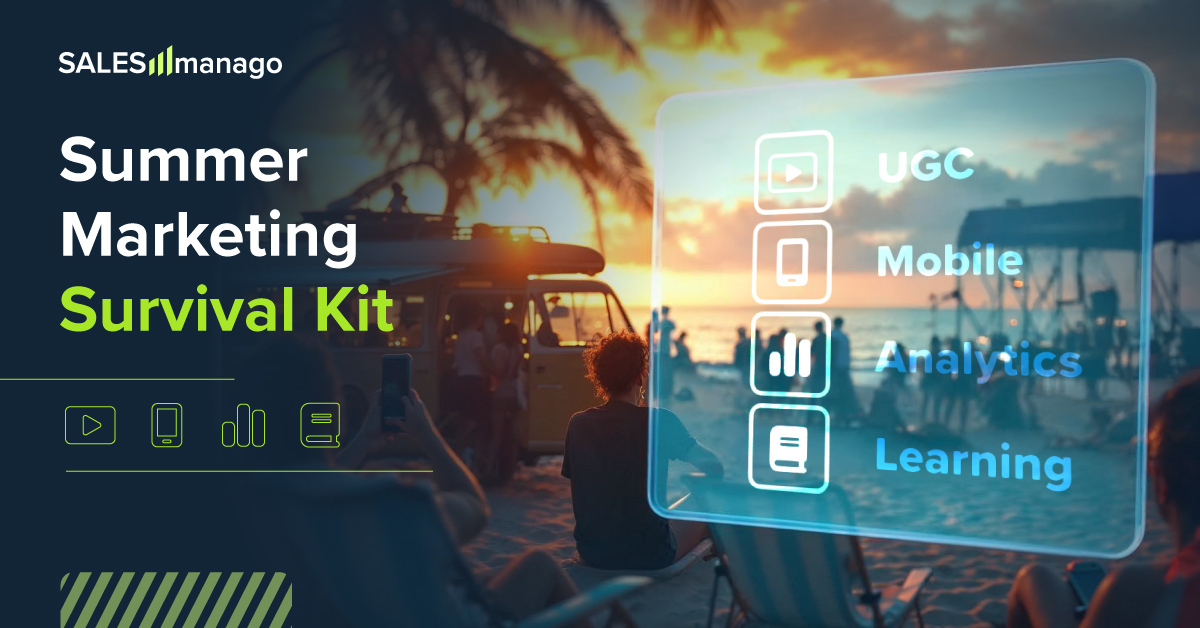
June marks a pivotal moment for marketers. Summer campaigns are in full swing, consumers are dreaming of holidays, and the mid-year point offers a perfect opportunity to review what's working and what isn’t. Whilst it’s tempting to ease off the accelerator in summer, smart marketers use this time to fine-tune their strategy for maximum impact.
But where should you focus your energy? We’ve identified four key areas that demand your attention right now, from harnessing the power of authentic voices to optimising for on-the-go audiences. Here is your essential checklist to ensure your marketing stays ahead of the curve this summer.
Book Holidays with UGC (User-generated Content)
Yes, this is a last minute offer! As the days get longer, social feeds fill up with holiday snaps, festival stories, and sunny garden gatherings. This surge in authentic, user-created content is a goldmine for marketers. People are increasingly looking for unfiltered recommendations and real-life experiences to guide their decisions, and Google is taking notice by prioritising this type of content.
Instead of relying solely on polished, branded messages, it's time to let your customers do the talking. For a deeper dive into how UGC is becoming a cornerstone of modern SEO strategies, this analysis from Search Engine Land provides excellent insights.
19 Marketer Painpoints
Many marketers feel like they are drowning in data yet starving for wisdom. One of the most persistent pain points, especially in eCommerce, is the gap between collecting vast amounts of customer data and using it effectively to increase conversions and loyalty.
At the end of the second quarter, it's the ideal time to pause, breathe, and analyse your performance data from the first half of the year.
There’s a good chance you won’t be the only one who’s seeing the pain points.This Forbes article provides nineteen expert-led solutions for overcoming common eCommerce marketing challenges, offering a wealth of actionable advice through collective difficulty.
The Mobile Imperative
If your marketing isn't mobile-first, it's already falling behind. In summer, this becomes non-negotiable. Your audience isn't chained to a desk; they are at parks, on trains, and browsing from sun loungers. Their primary connection to your brand is the device in their pocket.
The statistics speak for themselves:
Mobile devices account for 70% of all paid search impressions.
A staggering 64% of the average digital ad budget is directed towards mobile.
By 2028, mobile is projected to drive 70% of all advertising spending.
To get a full picture of the mobile landscape, these mobile marketing statistics from G2 are an essential resource for any data-driven marketer.
Book for Summer Your Own Growth
Use any downtime to explore the topics that will shape the future of marketing. Read a book on a subject outside your comfort zone. You might find the inspiration for your next big campaign or even a whole new business venture.
For inspiration on what to add to your reading list, this curated collection of books from Practical Ecommerce is an excellent place to start—if you’re not a fiction reader!
Latest posts

6 Trends Shaping the Future of eCommerce in 2026
Every few years, eCommerce shifts in a way that forces leaders to rethink almost everything they have known so far. And 2026 feels like one of those years. We are now facing an unprecedented change caused by spreading AI solutions across all industries and markets. Every year, AI becomes more and m...

Omnichannel Marketing Automation: The Strategy for Unified Growth
The modern eCommerce marketer is caught in a difficult paradox. You are expected to deliver a seamless, relevant experience for every single customer—true 1-to-1 personalisation—yet you are often armed with a fragmented stack of tools that treat your customers like rows in a spreadsheet.

Last 2025 Trends - The Goblincore December
If you have spent any time on social media recently, you might have encountered the term "Goblincore." It is an aesthetic and a mindset that rejects the polished, minimalist perfection of modern life in favour of the chaotic, the cozy, the earthy, and the comfortably "ugly." It is about burrowing into a pile of blankets, collecting shiny trinkets,...
